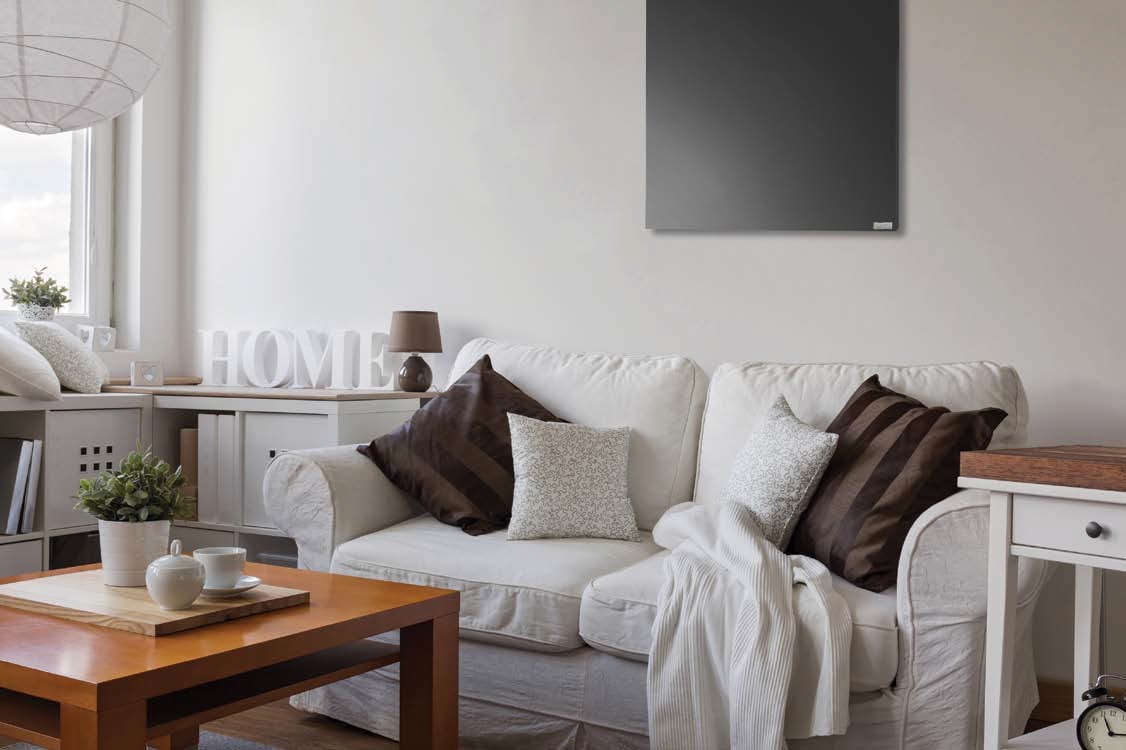
Infrared heating is growing in popularity but, as with anything new, people have misconceptions. For instance, some worry about using infrared heating in every-day places, especially as a replacement for something like central heating. So, in this article we answer some of the most common questions as well as talking about the truth behind some of the myths.
Infrared heating is fast becoming one of the top choices for home heating in the UK. Developed to be 100% efficient, many people are taking an interest in this new form of technology, especially since the release of a 2019 report by the Committee on Climate Change (CCC) on the creation of low carbon and sustainable homes (1).
Q: Is Infrared Heating Safe and is it comfortable?
A: Infrared is actually the oldest and most natural type of heat as it is what the sun emits - but without any harmful ultra violet (UV) rays. Infrared heating is so safe, in fact, that far infrared, the gentlest form of infrared, is often used in incubators for babies to keep them warm.
Infrared heat is a lot healthier than traditional convection heat as it transmits natural heat in an efficient and safe way, eliminating the unhealthy emissions and smells that come with gas heaters and oil burners. It also guarantees clear air with zero emissions and no odour.
Q: Are infrared panels difficult to install?
A: Infrared heating panels are highly cost-effective to install as they don’t require pipework to function and simply plug into the wall like a regular appliance. This means that disruption is also minimal as panels can be installed in less than a day, making it much more desirable than other forms of heating that could be inconvenient and would involve the moving of carpets and floorboards.
Because of their versatility, it’s also possible to gradually introduce infrared heaters as they can be quickly and easily installed by an electrician, making it cheaper than other forms of heating. This includes gas heating, where extra pipework may have to be brought in.
|
The average home installation of infrared heating panels costs around £800, compared to up to £3000 for gas central heating.
|
Q: Can infrared panels burn?
A: Like any traditional heater, infrared heaters will get hot when they’re in use. The heat levels are similar to that of a gas radiator to the touch, but have the advantage of not having to be installed at floor level and can be fitted on walls and ceilings.
Q: Does infrared heat lead to a suntan?
A: While infrared heat is designed to be similar to what is generated by the sun, it’s the sun’s UV component that enables people to tan and not infrared. Infrared heat does not tan the skin but instead stimulates circulation and eases muscle pain and is widely used as a source of heating in yoga studios and health facilities.
Q: Will it damage the wall or ceiling?
A: Infrared heating panels only contain a few components, with one of the most important being insulation to ensure walls and ceilings are protected from any heat generated, and is designed to push the infrared energy outwards in order to heat the room more effectively.
Q: Is infrared heating reliable?
A: Because the heaters contain so few components and no moving parts, infrared heaters require little to no maintenance and can last for many years. Developed to be highly energy efficient, Tansun’s radiant panels are cost effective and can save approximately 30-70% in heating costs and come with a full five-year warranty.
Q: Do infrared devices interfere with each other?
If every radio used the same frequency, everyone listening would be able to hear multiple stations at once, which is why each station has their own frequency. Infrared works in the same way by using different frequencies to others to avoid any interference.
|
If you're interested in using infrared in your home, why not check out our range of infrared heat panels? Available in 3 standard sizes you can read more about each by clicking on the links below.
|
(1). 'UK Housing - Fit for the Future?', Committee on Climate Change,
February 2019.